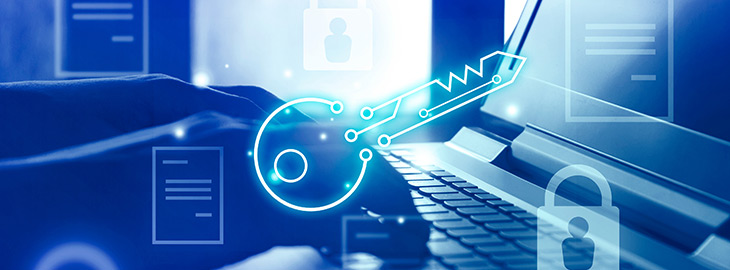
5 Steps to Performing a Cybersecurity Risk Assessment
A strong cybersecurity program starts with a clear threat intelligence and risk assessment process. Every organization faces different threats, which is why a tailored cyber risk assessment is essential to identify vulnerabilities, prioritize risk mitigation, and strengthen your cybersecurity posture.
In this guide, we’ll walk through the key steps information security teams can follow to build an effective and repeatable risk management process.
What Is a Cybersecurity Risk Assessment?
A cybersecurity risk assessment evaluates threats to an organization’s IT systems and data, as well as the capacity to safeguard those assets from cyberattacks.
Organizations should use a cybersecurity risk assessment to identify and prioritize opportunities for improvement in existing information security programs. A risk assessment also helps companies communicate risks to stakeholders and make educated decisions about allocating resources to mitigate those data security risks.
Cybersecurity Risk Assessments: Getting Started
Preparing for a cybersecurity risk assessment involves aligning the organization’s information security goals with its broader business objectives. Consider the following activities as part of the initial preparation for the risk assessment.
- Define cybersecurity threats: Think about all possible scenarios that threaten the safety of customer and employee data and the functionality of your products and services. Hackers can bypass security measures, exploit vulnerabilities, steal or modify critical data, and run unauthorized programs.
- Identify security vulnerabilities: Once potential threats are understood, inspect each component of the IT infrastructure.
- Determine threat likelihood and potential impact: Next, assess the probability and potential severity of each identified risk. This step helps prioritize which security weaknesses require immediate attention in remediation efforts.
How Do You Perform a Cybersecurity Risk Assessment?
A successful assessment starts with a cross-functional team, including IT, compliance, privacy, HR, product, and business leaders.
For example, compliance ensures alignment with frameworks like the National Institute of Standards and Technology (NIST) or the Health Insurance Portability and Accountability Act (HIPAA), while privacy helps identify personal data under regulations like GDPR.
With the right people in place, the next step is to follow a structured five-step process, which we cover below.
Step 1: Catalog Information Assets
Start by identifying all information assets, including IT infrastructure and cloud services (SaaS, PaaS, IaaS), along with the sensitive information they handle. To fully understand what the company collects, stores, and transmits (and where), consider the following:
- What types of data are collected and from where?
- Where is it stored, transmitted, or shared?
- Which vendors and devices are involved, and what access do they have?
- What authentication methodologies are in place?
- Do remote employees access data, and if so, how?
- Which networks, servers, and databases process and store information?
Step 2: Assess the Risk
Not all assets or vendors carry the same level of risk. Once assets are identified, evaluate how their loss or compromise would impact the business. Key questions to ask include:
- Which information systems and data are critical to business operations?
- What must remain confidential, available, and intact?
- What data should be anonymized in case encryption fails?
- Which devices and systems are most vulnerable?
- What are the potential financial, operational, and reputational impacts of a breach?
- Is a business continuity and incident response plan in place for security incidents?
Step 3: Analyze the Risk
Risk analysis assigns priority to the risks you’ve listed. For each risk, give a score based on the following:
- Probability—the likelihood of a cybercriminal obtaining unauthorized access to the asset
- Impact—the financial, operational, strategic, and reputational impact that a security event might have on the organization
To establish your risk tolerance level, multiply the probability by the impact. Then determine your response for each risk: accept, avoid, transfer, or mitigate.
For example, a database with public information might have few security controls, so the probability of a breach might be high. On the other hand, the damage would be low since the attackers would only be getting information that’s already publicly available. You might be willing to accept the security risk for that particular database because the impact score is low, despite the high probability of a breach.
Conversely, suppose you’re collecting financial information from customers. The probability of a breach might be low, but the harm could be severe regulatory penalties, a damaged corporate reputation and loss of customer trust. You may decide to mitigate these high-risk scenarios by taking out a cybersecurity insurance policy.
Step 4: Set Security Controls
Security controls will help you eliminate potential risks or significantly reduce the chance of them happening. Examples of controls include:
- Network segregation
- At-rest and in-transit encryption
- Anti-malware, anti-ransomware, and anti-phishing software
- Firewall configuration
- Password protocols
- Multi-factor authentication
- Workforce training
- Vendor risk management framework
Step 5: Monitor and Document Continuously
Organizations have traditionally relied on penetration testing and periodic audits to validate their IT security. While still important, these methods are not enough. Organizations must adopt continuous control monitoring (CCM) and real-time mechanisms that can detect and respond to emerging cyber risk scenarios as they unfold.
Maintaining an up-to-date security posture requires an ongoing review of residual risk, risk posture, and the effectiveness of remediation actions. This ensures that your cybersecurity risk management strategy remains flexible and responsive to new cyber threats.
Equally important is documenting assessment results and actions taken. Keeping a detailed risk register allows your organization to track changes over time and support future audits with a reliable historical record.
Benefits of Performing a Security Risk Assessment
A cybersecurity risk assessment has several key advantages:
- Lower incident costs: Reduces long-term expenses from breaches or theft of critical assets
- Clear risk baseline: Establishes a starting point for tracking and improving risk over time
- Stronger cybersecurity case: Helps CISOs justify the need for security programs to stakeholders
- Breach prevention: Identifies and mitigates threat actors before they lead to data breaches
- Regulatory readiness: Reduces the risk of non-compliance with data protection regulations
- Enhanced reputation: Prevents data loss that could damage brand trust and business continuity
Identifying and Prioritizing Assets
Before you can protect what matters, you need to know what you have and what’s worth the most. Identifying and prioritizing assets is one of the most foundational steps in any cybersecurity risk assessment. Without a clear understanding of your asset landscape, you might miss critical gaps or misallocate resources.
Start with a Comprehensive Asset Inventory
Effective cyber risk management begins with visibility. That means building and maintaining a complete inventory of assets: hardware, software, cloud services, sensitive data, IP, and even third-party integrations. A comprehensive asset inventory gives your team the full picture—what exists, where it lives, and who owns it.
This isn’t just a one-time list. The asset environment changes frequently with system upgrades, shadow IT, or organizational growth. So, keep your inventory current.
Classify Assets Based on Business Value and Sensitivity
Once you’ve identified the assets, the next step is classification. This helps prioritize which systems and data deserve the most protection based on business impact, regulatory requirements, and sensitivity.
A typical classification framework might sort assets into tiers—public, internal, confidential, or restricted—depending on legal standing, operational importance, or risk of reputational damage if compromised. For example, customer PII or proprietary algorithms may fall into the “crown jewels” category, requiring the highest level of protection and monitoring.
Tie Asset Prioritization to Business Continuity and Risk Appetite
Prioritization should also reflect the organization’s broader risk management goals and business continuity plans. Especially since not every asset requires the same level of investment. Use a risk matrix to map asset importance against likelihood and threat impact and guide decisions about control implementation and budget allocation.
Align with Established Frameworks
Frameworks like the NIST Cybersecurity Framework reinforce this process by encouraging organizations to identify critical functions and assets as the first step. It lays the groundwork for everything that follows.
Monitoring and Documenting Results
Cyber threats don’t wait for annual reviews. New vulnerabilities emerge daily, and previously mitigated risks can resurface under different circumstances. Continuous control monitoring helps detect shifts in the environment in real time, allowing you to validate whether controls are working as intended and to identify issues before they escalate.
This proactive stance helps maintain an accurate view of your current security posture. When done well, continuous monitoring not only flags new threats, but also reveals gaps in mitigation by surfacing residual risks that need further attention.
The Role of Documentation in Cyber Risk Management
Documentation should serve your team, not slow it down. A well-maintained risk register acts as the central source of truth: logging assessment results, control gaps, remediation actions, and residual risk. Think of it as a living record of your risk posture and how it’s evolving.
Let’s say you’re part of a compliance team at a financial services firm navigating frequent changes to data privacy laws. If you’re updating the risk register consistently after each assessment, you might start to notice a pattern—maybe third-party vendors keep showing up as a recurring source of elevated risk. That kind of insight isn’t easy to spot without documentation, but once you have it, you can adjust your vendor risk management process before it becomes a bigger issue.
Regular updates to the risk register also builds a trackable history for future assessments. You’ll have the context you need to show how your risk posture has shifted over time, and where your biggest improvements (or gaps) are.
Reporting and Stakeholder Communication
Cybersecurity is no longer confined to information technology teams. Risk officers, compliance leaders, and executive stakeholders all need visibility into what’s being done to protect the organization. Regular reporting meets this need, helping satisfy regulatory requirements and foster informed decision-making.
Clear reports based on documented assessments let you communicate the severity of issues and the status of remediation efforts. It also informs about the overall effectiveness of your cybersecurity strategy and security policies.
ZenGRC for Cybersecurity Risk Assessments
ZenGRC is a governance, risk, and compliance (GRC) platform that simplifies cybersecurity risk and vulnerability assessments. It helps teams manage risk frameworks, assign and track tasks, and stay audit-ready with a centralized document repository.
With features like user-friendly dashboards, task workflows, and integration with tools like ServiceNow, ZenGRC streamlines risk assessment, analysis, and mitigation. It also supports major compliance frameworks, including PCI DSS, ISO, and HIPAA.
Schedule a demo to get started on worry-free risk management.
